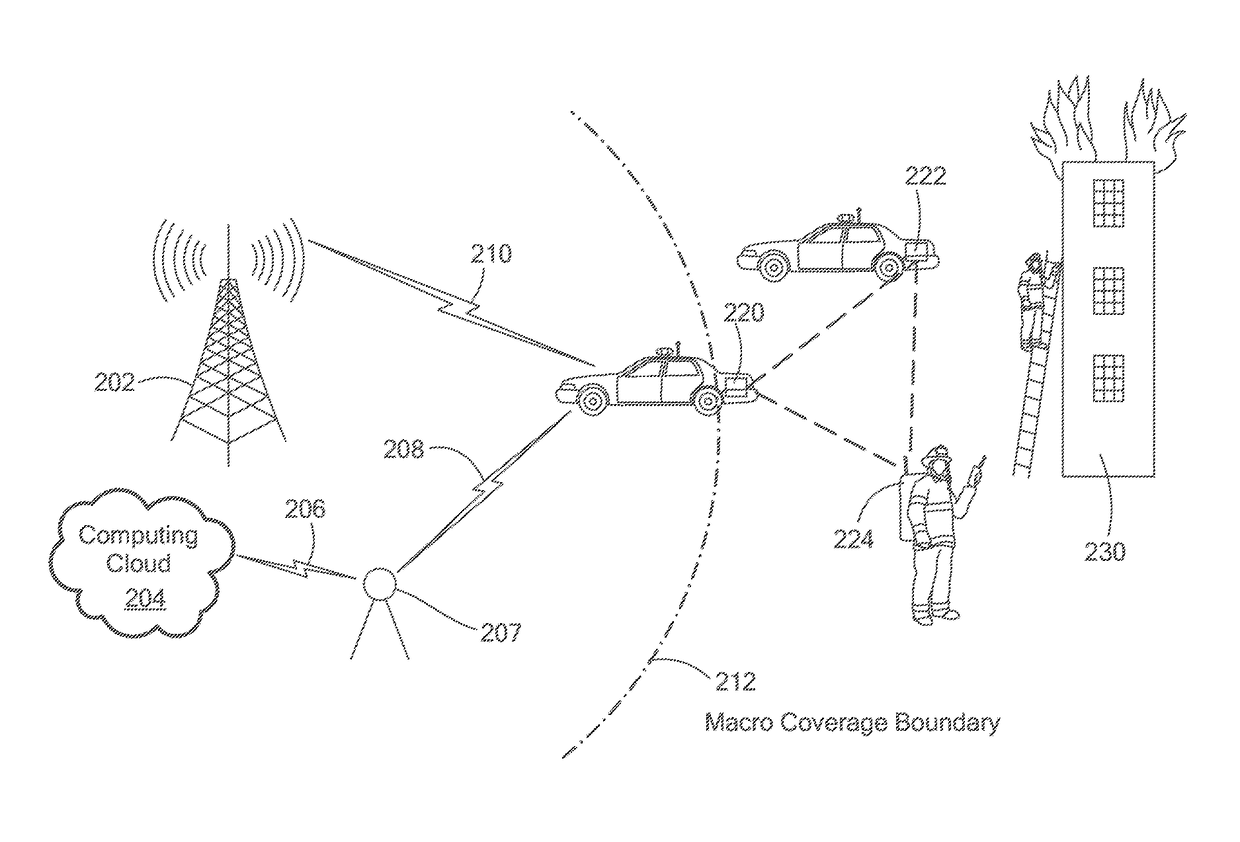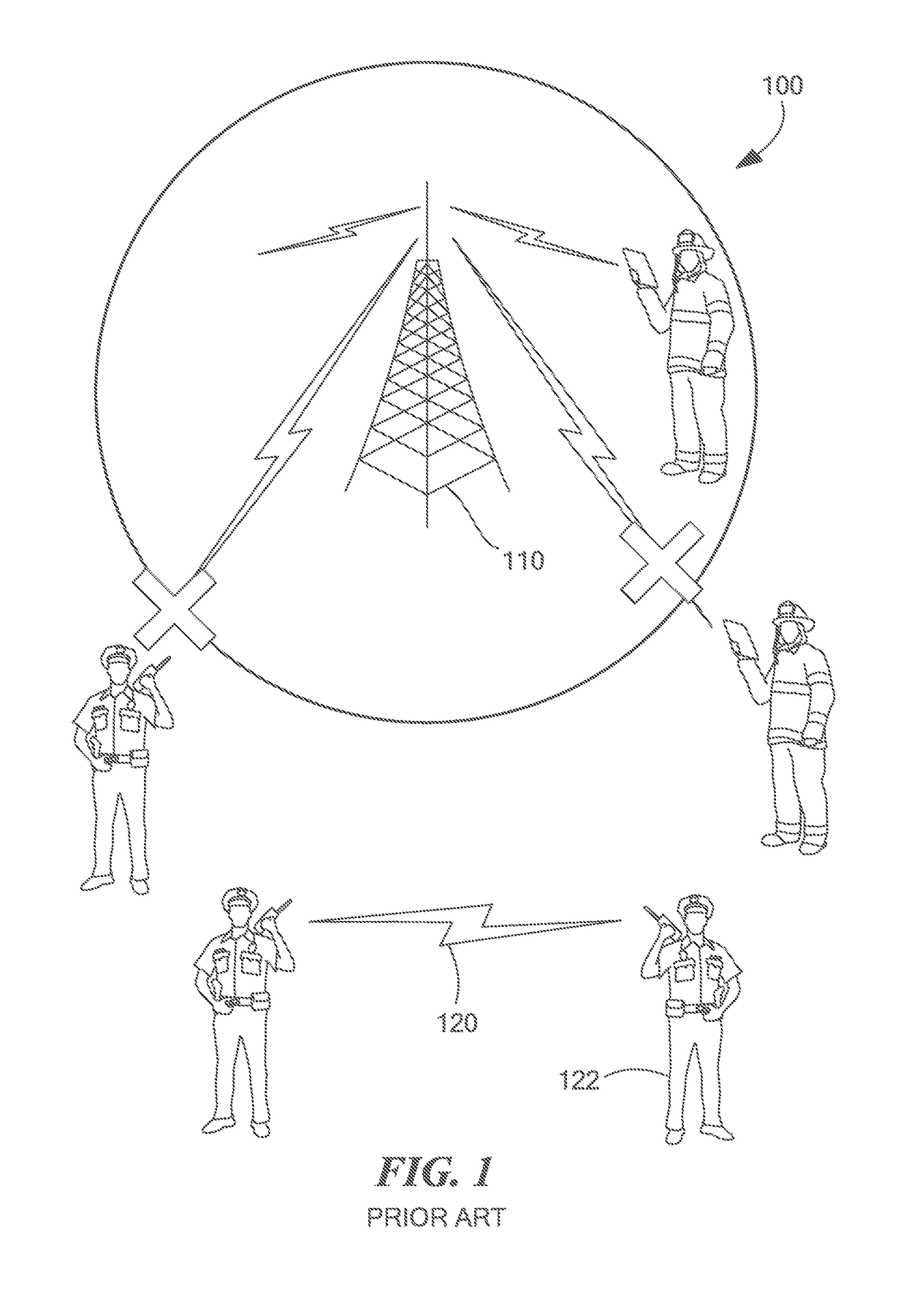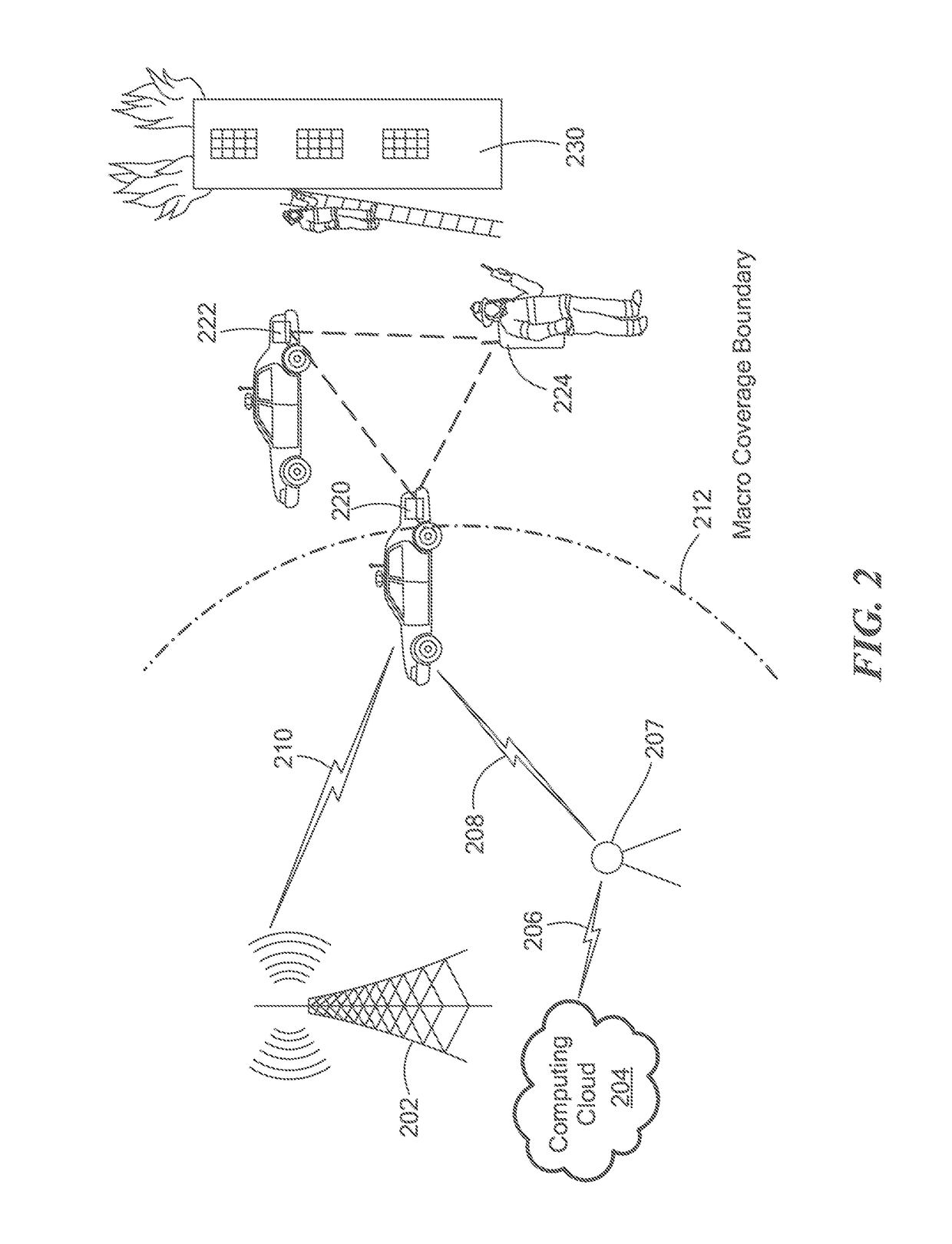Methods of enabling base station functionality in a user equipment
a technology of user equipment and base station, applied in the field of wireless multimedia telecommunications, can solve the problems of cellular coverage not being able to provide the desired services, devices are not without limitations, and are usually unable to make voice calls
- Summary
- Abstract
- Description
- Claims
- Application Information
AI Technical Summary
Benefits of technology
Problems solved by technology
Method used
Image
Examples
Embodiment Construction
[0074]FIG. 1 shows an exemplary diagram of a prior art public safety communication network100 that facilitates two types of communication—either through a tower 110 or peer-to-peer 120. In either of these communication modes, the public safety officer's radio must be within range of the tower 110, or of his peer 122. Being within range of a receiving radio or base station is an inherent limitation of all wireless communication networks. Some of the drawbacks of tower-based infrastructure are discussed in the background section.
[0075]In the public safety communication network 100, range problems are further compounded in the United States by the fact that most public safety communication networks 100 are owned and operated by individual towns, cities, municipalities, and the like. This results in a lack of uniformity nationwide and an inability to leverage infrastructure from surrounding localities. Some of the public safety communications networks 100 in various countries are privat...
PUM
 Login to View More
Login to View More Abstract
Description
Claims
Application Information
 Login to View More
Login to View More - R&D
- Intellectual Property
- Life Sciences
- Materials
- Tech Scout
- Unparalleled Data Quality
- Higher Quality Content
- 60% Fewer Hallucinations
Browse by: Latest US Patents, China's latest patents, Technical Efficacy Thesaurus, Application Domain, Technology Topic, Popular Technical Reports.
© 2025 PatSnap. All rights reserved.Legal|Privacy policy|Modern Slavery Act Transparency Statement|Sitemap|About US| Contact US: help@patsnap.com



